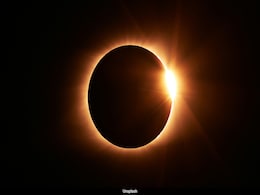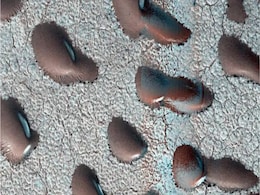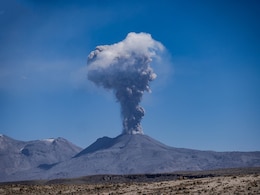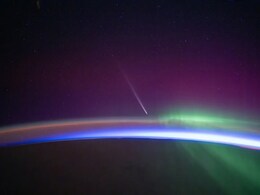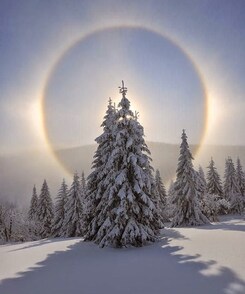Northern Hemisphere
- All
- News
- Videos
- Web Stories
-

A Star Is Set To Explode Today, Will Be Visible To Naked Eye
- Thursday March 27, 2025
- Science | Edited by NDTV News Desk
A faint star in a constellation visible from the Northern Hemisphere after dark may explode on Thursday in what's going to be a once in 80 years occurrence.
-
 www.ndtv.com
www.ndtv.com
-

Partial Solar Eclipse In Parts Of Northern Hemisphere On Saturday
- Thursday March 27, 2025
- World News | Agence France-Presse
The moon will cross in front of the Sun for around four hours on Saturday, creating a partial solar eclipse that careful skygazers will able to see in parts of the Northern Hemisphere.
-
 www.ndtv.com
www.ndtv.com
-

Vernal Equinox 2025: Date, Time, and the Science Behind the Event
- Friday March 7, 2025
- Written by Gadgets 360 Staff
The vernal equinox 2025 is set for March 20 at 09:01 UTC, marking the astronomical start of spring in the Northern Hemisphere and autumn in the Southern Hemisphere. This event occurs due to Earth’s axial tilt aligning with its orbit, resulting in nearly equal hours of daylight and night across the globe. While the equinox does not bring perfectly...
-
 www.gadgets360.com
www.gadgets360.com
-

New Study Reveals How Earth's Orbit Controls Ice Ages
- Friday February 28, 2025
- World News | Agence France-Presse
A research team examined a million-year record of climate change, focusing on land-based ice sheets across the Northern Hemisphere and deep ocean temperatures.
-
 www.ndtv.com
www.ndtv.com
-

Partial Solar Eclipse March 2025: What You Need to Know
- Friday February 14, 2025
- Science | Edited by Nikhil Pandey
A partial solar eclipse will occur on March 29, 2025, visible from parts of the Northern Hemisphere, including Europe, Asia, Africa, North America, and South America.
-
 www.ndtv.com
www.ndtv.com
-

Comet 2024 G3 (ATLAS) Becomes the 'Great Comet' of 2025 with Stunning Display
- Thursday January 30, 2025
- Written by Gadgets 360 Staff
Comet 2024 G3 (ATLAS) has captured the attention of astronomers with its incredible brightness and distinct tail structure. First observed in 2024, it became the brightest comet in 18 years, and it even reached a rare feat of being visible during daylight. This comet, which passed closest to the sun in January 2025, has earned the title of "Great C...
-
 www.gadgets360.com
www.gadgets360.com
-

Seismic Data from NASA’s InSight Might Solve the Mystery of Mars’ Dichotomy
- Thursday January 23, 2025
- Written by Gadgets 360 Staff
NASA’s InSight mission has provided seismic data shedding light on the Martian dichotomy, the split between Mars’ northern lowlands and southern highlands. Findings from the mantle’s seismic wave analysis suggest the split stems from ancient tectonic activity and magma dynamics, rather than asteroid impacts. Variations in crust thickness and ...
-
 www.gadgets360.com
www.gadgets360.com
-

Mars Satellite Images Reveal Giant 'Kidney Beans,' Sparking Hints of Water and Life
- Thursday January 16, 2025
- Written by Gadgets 360 Staff
NASA's Mars Reconnaissance Orbiter captured images of frozen sand dunes in Mars' northern hemisphere, revealing unique formations halted by carbon dioxide frost during winter. Unlike Earth's desert dunes, which shift with wind, these Martian dunes remain stationary until spring thaw releases their icy grip. Scientists study these features to unders...
-
 www.gadgets360.com
www.gadgets360.com
-

200 Years On, 'Mystery Volcano' That Cooled Earth In 1831, Found
- Saturday January 4, 2025
- World News | Edited by NDTV News Desk
The annual average temperatures in the Northern Hemisphere came down by around 1 degree Celsius during one of the most powerful eruptions in the 19th century.
-
 www.ndtv.com
www.ndtv.com
-

Solar Storm Sparks Northern Lights Across Western Hemisphere on New Year's Eve
- Friday January 3, 2025
- Written by Gadgets 360 Staff
Solar storms on New Year’s Eve sparked breathtaking auroras across the US and Europe, with vibrant displays visible as far south as California, Austria, and Germany. Two coronal mass ejections (CMEs) struck Earth’s magnetic field, causing geomagnetic storms that reached G3 levels on January 1.
-
 www.gadgets360.com
www.gadgets360.com
-

Winter Solstice 2024: All About The Shortest Day And Longest Night Of The Year
- Wednesday December 18, 2024
- Feature | Edited by Ritu Singh
Winter Solstice 2024: The Earth's tilt of approximately 23.5 degrees on its axis is the primary reason for the occurrence of the winter solstice and the changing seasons.
-
 www.ndtv.com
www.ndtv.com
-

Irminger Sea’s Crucial Role in Atlantic Ocean Current Collapse Identified
- Thursday November 21, 2024
- Written by Gadgets 360 Staff
A new study highlights the vital role of the Irminger Sea in the Atlantic Meridional Overturning Circulation (AMOC). Increasing meltwater from the Arctic is weakening this critical ocean current, which regulates global climate. The research suggests that disruptions in the Irminger Sea could cause widespread climate shifts, including cooling in the...
-
 www.gadgets360.com
www.gadgets360.com
-

Rare Comet Tsuchinshan-ATLAS Appears in Earth Skies After 80,000 Years, Best Viewing Said to be This Week
- Monday October 14, 2024
- Written by Gadgets 360 Staff
The anticipated Comet Tsuchinshan-ATLAS (C/2023 A3) has been visible in the evening sky for Northern Hemisphere observers starting October 11. Discovered in early 2023, the comet reached its closest point to Earth on October 12, making it a prime time for observation. Spot it near Venus about 40 minutes after sunset. The best views are expected ove...
-
 www.gadgets360.com
www.gadgets360.com
-

Aurora Season in September 2024 Could Bring Vibrant Northern Lights Due to Earth's Tilt
- Sunday September 8, 2024
- Written by Gadgets 360 Staff
Auroras are expected to be more intense around September's equinox due to the Russell-McPherron Effect. The phenomenon occurs when Earth's magnetic field temporarily aligns with the solar wind, allowing charged particles to penetrate and interact with our atmosphere. This interaction causes vibrant Northern Lights, especially during the equinox. Wi...
-
 www.gadgets360.com
www.gadgets360.com
-

The 2024 Perseid Meteor Shower To Peak Tonight: Where And How To Watch
- Monday August 12, 2024
- Science | Edited by Ritu Singh
The shower is expected to produce around 50-75 meteors per hour at its peak, with the possibility of fireballs and meteors with long trains.
-
 www.ndtv.com
www.ndtv.com
-

A Star Is Set To Explode Today, Will Be Visible To Naked Eye
- Thursday March 27, 2025
- Science | Edited by NDTV News Desk
A faint star in a constellation visible from the Northern Hemisphere after dark may explode on Thursday in what's going to be a once in 80 years occurrence.
-
 www.ndtv.com
www.ndtv.com
-

Partial Solar Eclipse In Parts Of Northern Hemisphere On Saturday
- Thursday March 27, 2025
- World News | Agence France-Presse
The moon will cross in front of the Sun for around four hours on Saturday, creating a partial solar eclipse that careful skygazers will able to see in parts of the Northern Hemisphere.
-
 www.ndtv.com
www.ndtv.com
-

Vernal Equinox 2025: Date, Time, and the Science Behind the Event
- Friday March 7, 2025
- Written by Gadgets 360 Staff
The vernal equinox 2025 is set for March 20 at 09:01 UTC, marking the astronomical start of spring in the Northern Hemisphere and autumn in the Southern Hemisphere. This event occurs due to Earth’s axial tilt aligning with its orbit, resulting in nearly equal hours of daylight and night across the globe. While the equinox does not bring perfectly...
-
 www.gadgets360.com
www.gadgets360.com
-

New Study Reveals How Earth's Orbit Controls Ice Ages
- Friday February 28, 2025
- World News | Agence France-Presse
A research team examined a million-year record of climate change, focusing on land-based ice sheets across the Northern Hemisphere and deep ocean temperatures.
-
 www.ndtv.com
www.ndtv.com
-

Partial Solar Eclipse March 2025: What You Need to Know
- Friday February 14, 2025
- Science | Edited by Nikhil Pandey
A partial solar eclipse will occur on March 29, 2025, visible from parts of the Northern Hemisphere, including Europe, Asia, Africa, North America, and South America.
-
 www.ndtv.com
www.ndtv.com
-

Comet 2024 G3 (ATLAS) Becomes the 'Great Comet' of 2025 with Stunning Display
- Thursday January 30, 2025
- Written by Gadgets 360 Staff
Comet 2024 G3 (ATLAS) has captured the attention of astronomers with its incredible brightness and distinct tail structure. First observed in 2024, it became the brightest comet in 18 years, and it even reached a rare feat of being visible during daylight. This comet, which passed closest to the sun in January 2025, has earned the title of "Great C...
-
 www.gadgets360.com
www.gadgets360.com
-

Seismic Data from NASA’s InSight Might Solve the Mystery of Mars’ Dichotomy
- Thursday January 23, 2025
- Written by Gadgets 360 Staff
NASA’s InSight mission has provided seismic data shedding light on the Martian dichotomy, the split between Mars’ northern lowlands and southern highlands. Findings from the mantle’s seismic wave analysis suggest the split stems from ancient tectonic activity and magma dynamics, rather than asteroid impacts. Variations in crust thickness and ...
-
 www.gadgets360.com
www.gadgets360.com
-

Mars Satellite Images Reveal Giant 'Kidney Beans,' Sparking Hints of Water and Life
- Thursday January 16, 2025
- Written by Gadgets 360 Staff
NASA's Mars Reconnaissance Orbiter captured images of frozen sand dunes in Mars' northern hemisphere, revealing unique formations halted by carbon dioxide frost during winter. Unlike Earth's desert dunes, which shift with wind, these Martian dunes remain stationary until spring thaw releases their icy grip. Scientists study these features to unders...
-
 www.gadgets360.com
www.gadgets360.com
-

200 Years On, 'Mystery Volcano' That Cooled Earth In 1831, Found
- Saturday January 4, 2025
- World News | Edited by NDTV News Desk
The annual average temperatures in the Northern Hemisphere came down by around 1 degree Celsius during one of the most powerful eruptions in the 19th century.
-
 www.ndtv.com
www.ndtv.com
-

Solar Storm Sparks Northern Lights Across Western Hemisphere on New Year's Eve
- Friday January 3, 2025
- Written by Gadgets 360 Staff
Solar storms on New Year’s Eve sparked breathtaking auroras across the US and Europe, with vibrant displays visible as far south as California, Austria, and Germany. Two coronal mass ejections (CMEs) struck Earth’s magnetic field, causing geomagnetic storms that reached G3 levels on January 1.
-
 www.gadgets360.com
www.gadgets360.com
-

Winter Solstice 2024: All About The Shortest Day And Longest Night Of The Year
- Wednesday December 18, 2024
- Feature | Edited by Ritu Singh
Winter Solstice 2024: The Earth's tilt of approximately 23.5 degrees on its axis is the primary reason for the occurrence of the winter solstice and the changing seasons.
-
 www.ndtv.com
www.ndtv.com
-

Irminger Sea’s Crucial Role in Atlantic Ocean Current Collapse Identified
- Thursday November 21, 2024
- Written by Gadgets 360 Staff
A new study highlights the vital role of the Irminger Sea in the Atlantic Meridional Overturning Circulation (AMOC). Increasing meltwater from the Arctic is weakening this critical ocean current, which regulates global climate. The research suggests that disruptions in the Irminger Sea could cause widespread climate shifts, including cooling in the...
-
 www.gadgets360.com
www.gadgets360.com
-

Rare Comet Tsuchinshan-ATLAS Appears in Earth Skies After 80,000 Years, Best Viewing Said to be This Week
- Monday October 14, 2024
- Written by Gadgets 360 Staff
The anticipated Comet Tsuchinshan-ATLAS (C/2023 A3) has been visible in the evening sky for Northern Hemisphere observers starting October 11. Discovered in early 2023, the comet reached its closest point to Earth on October 12, making it a prime time for observation. Spot it near Venus about 40 minutes after sunset. The best views are expected ove...
-
 www.gadgets360.com
www.gadgets360.com
-

Aurora Season in September 2024 Could Bring Vibrant Northern Lights Due to Earth's Tilt
- Sunday September 8, 2024
- Written by Gadgets 360 Staff
Auroras are expected to be more intense around September's equinox due to the Russell-McPherron Effect. The phenomenon occurs when Earth's magnetic field temporarily aligns with the solar wind, allowing charged particles to penetrate and interact with our atmosphere. This interaction causes vibrant Northern Lights, especially during the equinox. Wi...
-
 www.gadgets360.com
www.gadgets360.com
-

The 2024 Perseid Meteor Shower To Peak Tonight: Where And How To Watch
- Monday August 12, 2024
- Science | Edited by Ritu Singh
The shower is expected to produce around 50-75 meteors per hour at its peak, with the possibility of fireballs and meteors with long trains.
-
 www.ndtv.com
www.ndtv.com





